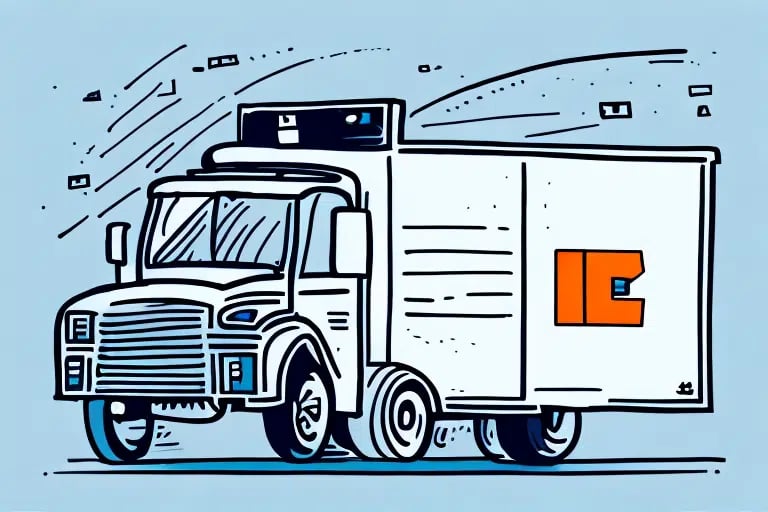Understanding UPS COD Fees: A Comprehensive Guide for Businesses
For businesses that ship goods to customers, managing shipping costs is crucial for maintaining profitability. One such cost that often surprises businesses is the UPS Cash on Delivery (COD) fee. This comprehensive guide delves into what UPS COD fees are, how they are calculated, and strategies to minimize these expenses.
What is UPS COD and How It Works?
UPS COD, or Cash on Delivery, is a service provided by UPS that allows businesses to collect payment from customers at the time of delivery. This service helps protect businesses against non-payment and fraud. When a customer opts for COD, UPS collects the payment upon delivery and then remits the funds to the shipper, typically within a specified timeframe.
However, the convenience of COD comes at a cost. UPS charges fees based on the value of the goods being shipped and other factors. It's important for businesses to understand these fees to avoid unexpected costs.
Types of UPS COD Fees
UPS imposes two primary types of COD fees:
- Standard COD Fee: Applied to shipments with a value of less than $1,000, typically around $11.50.
- Higher COD Fee: For shipments exceeding $1,000 in value, the fee is approximately 3% of the shipment’s value.
Additionally, other fees such as fuel surcharges, residential delivery fees, and handling charges may apply, further increasing the total shipping cost.
Calculating UPS COD Fees
Calculating UPS COD fees involves a simple formula:
COD Fee + (Value of Goods × Percentage Fee)
For example, shipping goods worth $5,000 would incur the following COD fees:
$11.50 + ($5,000 × 0.03) = $161.50
It's important to note that UPS COD services are primarily available for domestic shipments within the United States and Canada. International shipments may require different payment methods.
Businesses can also utilize UPS’s COD remittance service, which allows for direct payment collection, streamlining the payment process and reducing administrative overhead.
Strategies to Reduce UPS COD Fees
Managing and reducing UPS COD fees can significantly impact a business's bottom line. Here are several strategies to consider:
- Alternative Payment Options: Encourage customers to use credit cards, PayPal, or other electronic payment methods to reduce dependence on COD.
- Adjust Pricing and Shipping Policies: Implement pricing strategies that account for COD fees or offer discounts for alternative payment methods.
- Volume Negotiation: Negotiate with UPS for lower COD fees based on higher shipping volumes.
- Third-Party Logistics Providers (3PL): Use 3PLs to leverage their shipping rates and potentially secure better COD fee structures.
Common Mistakes Increasing UPS COD Fees
Avoiding common pitfalls can help businesses minimize UPS COD fees:
- Incorrect Labeling: Ensure all COD shipments are properly labeled to prevent processing errors and additional fees.
- Documentation Errors: Accurately document the value of goods being shipped to avoid discrepancies and potential disputes.
- Poor Packaging: Utilize reliable packaging materials to prevent damage and extra handling fees.
- Measurement Inaccuracies: Accurately weigh and measure packages to ensure correct fee assessments.
Negotiating UPS COD Fees
Businesses that ship in large volumes have greater leverage to negotiate lower UPS COD fees. Factors that can aid in negotiations include:
- Shipping Volume: Higher shipping volumes often qualify for reduced fees.
- Consistent Shipping Patterns: Regular and predictable shipping schedules can be advantageous in fee negotiations.
- Service Utilization: Utilizing additional UPS services, such as UPS My Choice or UPS Access Point, may provide negotiating power for better rates.
Engaging directly with UPS representatives and presenting detailed shipping data can facilitate more favorable fee structures.
Comparing UPS COD Fees with Other Carriers
It's essential to compare UPS COD fees with those of other carriers to ensure competitive pricing:
- FedEx: Charges a flat COD fee of approximately $12.50.
- DHL: Applies a percentage-based fee ranging from 1.5% to 3.5% of the COD amount.
- USPS: Offers COD services for a fee of around $5.75 plus a percentage ranging from 0.5% to 2.5%.
Evaluating these options can help businesses choose the most cost-effective carrier for their shipping needs.
Impact of Weight, Distance, and Packaging on UPS COD Fees
Several factors influence the total UPS COD fees:
- Weight and Distance: Heavier packages and longer delivery distances generally result in higher fees.
- Declared Value: The declared value of the shipment directly affects the COD fee percentage.
- Packaging: Oversized or irregularly shaped packages may incur additional handling fees.
Optimizing these factors can lead to significant savings on COD fees.
Best Practices for Managing UPS COD Expenses
Effective management of UPS COD fees involves several best practices:
- Accurate Labeling and Documentation: Ensure all shipments are correctly labeled and documented to avoid errors.
- Fee Negotiation: Regularly review and negotiate COD fees based on shipping volumes and business growth.
- Policy Adjustments: Implement shipping policies that encourage preferred payment methods.
- Data Analysis: Continuously monitor and analyze shipping data to identify cost-saving opportunities.
Tracking and Monitoring UPS COD Charges
Continuous tracking and monitoring of UPS COD charges are vital for maintaining control over shipping expenses. Regularly reviewing invoices and shipping records helps identify discrepancies and opportunities for negotiation. Additionally, understanding spending patterns can inform strategic decisions to further reduce costs.
Disputing Incorrect or Excessive UPS COD Fees
If incorrect or excessive UPS COD fees are identified, businesses should promptly dispute them with UPS. This process typically involves:
- Gathering Documentation: Collect all relevant shipping documents and invoices.
- Contacting UPS: Reach out to UPS customer service to initiate the dispute process.
- Following Up: Maintain communication with UPS to ensure the dispute is resolved satisfactorily.
Effective dispute resolution can result in significant cost savings over time.
Balancing Customer Expectations with Shipping Costs
While offering COD services can enhance customer satisfaction by providing flexible payment options, businesses must balance these benefits against the associated costs. Evaluating customer preferences and willingness to use alternative payment methods can help in making informed decisions about offering COD services.
Future Trends in Shipping Costs and UPS COD Services
The landscape of shipping and handling costs is continually evolving, influenced by advancements in technology and changes in consumer behavior. Future trends may include:
- Automation and AI: Enhanced automation in shipping processes could reduce handling times and costs.
- Dynamic Pricing Models: More sophisticated pricing models that adjust based on real-time data.
- Sustainable Practices: Increased focus on sustainable packaging and shipping methods could impact costs.
Staying informed about these trends will enable businesses to adapt strategies and maintain cost-effective shipping operations.
In conclusion, while UPS COD fees present a significant cost for businesses, understanding how they work and implementing effective management strategies can help mitigate these expenses. By staying informed and proactive, businesses can optimize their shipping practices and maintain competitiveness in the marketplace.






















